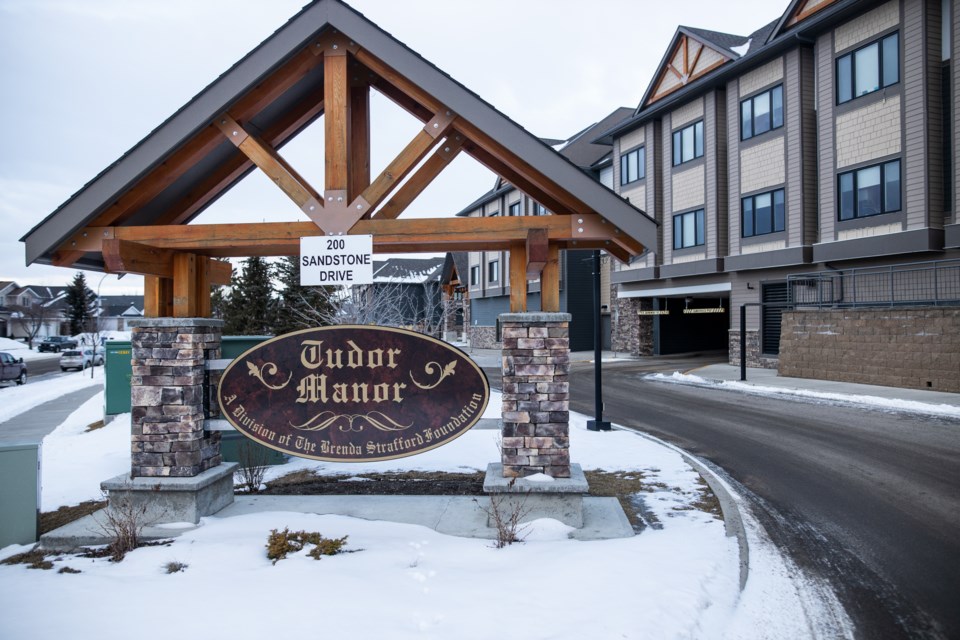Impacts from suggested changes to senior and long-term care could have adverse effects, according to an Alberta advocacy group.
A review of Alberta Health Services was conducted on behalf of the UCP government by Ernst & Young, resulting in more than 50 recommendations for cost-cutting measures designed to create efficiencies within the organization.
However, the Public Interest Alberta Society is concerned about the recommended changes to senior and long-term care, beginning with the idea of converting 1,300 long-term care beds to designated supported living.
“The difference between those two so-called ‘levels of care’ is several things that the public system covers in long-term care are not covered in supportive living,” said Joel French, executive director of the Public Interest Alberta Society.
He said pharmaceuticals and medical supplies and equipment, which are provided as part of long-term care, would be out-of-pocket for those who require them, unless they have insurance to cover the costs.
“The government calls it saving money, and it saves the government money but those costs don’t disappear – they’re just paid for by families and patients rather than the government,” said French. “It doesn’t save money. The term ‘savings’ is misleading – it’s a savings for the government but an increased cost by the same amount for families.”
In addition, the report recommended reducing staffing levels in long-term and supported care facilities, which he said will negatively impact the level of care received by patients.
Staff are already stretched thin and would struggle with fewer trained hands due to de-skilling, he said. Registered nurse (RN) positions could be turned into licensed practical nurse (LPN) positions and current LPN jobs would be covered by healthcare aids, he said.
The result would be people in need waiting for care and overwhelmed staff, he said.
“People with high medical needs in particular often go with their needs unmet for far too long because the staff just can’t handle it, they’re not given the support they need,” said French.
There is also consideration in the report for converting care providers like Carewest and Capital Care to private operations, which would also pass more costs onto families and potentially impact care, he said.
Based on research by Alberta’s Parkland Institute, he said private operators tend to provide less care with fewer professionals and fewer staff overall as opposed to public facilities.
He said the reason comes down to dollars and cents, and private operators are in it to turn a profit.
“Their primary duty to their shareholders is to make money, and the only way to make money is by reducing costs,” said French. “How do you reduce costs? Well, the highest cost is staffing, so they employ a bare minimum of staff and the less they spend on healthcare professionals the more money they make.”
The report’s recommendations aren’t all bad, he said.
It addressed issues with people stuck in alternative levels of care, meaning patients are often sitting in acute care in a hospital when they’re waiting for placement in a long-term care or supportive living facility.
“That does cost the system more money and it’s worse for the patient,” said French. “The reality is we just need to build more beds. We have a big shortage of long-term care, so it’s unclear what the actual solution will be.”
According to a statement from Alberta Health Services, the organization is evaluating the recommendations and setting priorities, and a plan of execution will be provided to Alberta Health within 100 days.
It states AHS will try to minimize impacts to its patients and their families as changes are made.
“Any realignment of beds between long-term care (LTC) and designated supportive living (DSL) will be made with the goal of ensuring that patients are cared for in the most appropriate setting,” AHS said in its statement.
“This work is not new or unusual. AHS already makes changes like this from time to time in response to local conditions – we’ve been converting LTC beds to DSL for years based on the assessed needs of residents and needs in the community.
“This work is always done in the best interests of our patients. As well, AHS has pledged to protect low-income patients as any changes are made through the review.”
Highwood MLA RJ Sigurdson said the UCP government’s intent with the review was to provide better care for Albertans, and he said he doesn’t believe the recommendations will necessarily have a negative impact on health services.
“This is not about cutting care at all, this is about finding savings within the system so we can redirect all of those savings to the front line and providing better care for patients and Albertans across the province,” said Sigurdson. “That’s the intent, to make sure we have the most efficient and effective system possible for the taxpayers’ dollars that are being spent.”
He said Ernst & Young was engaged to develop an in-depth review of AHS and come back with recommendations, but they are just that – recommendations.
The government is currently taking a close look in caucus meetings and assessing their viability, he said.
“We have not committed to making any of the changes as outlined,” said Sigurdson.




